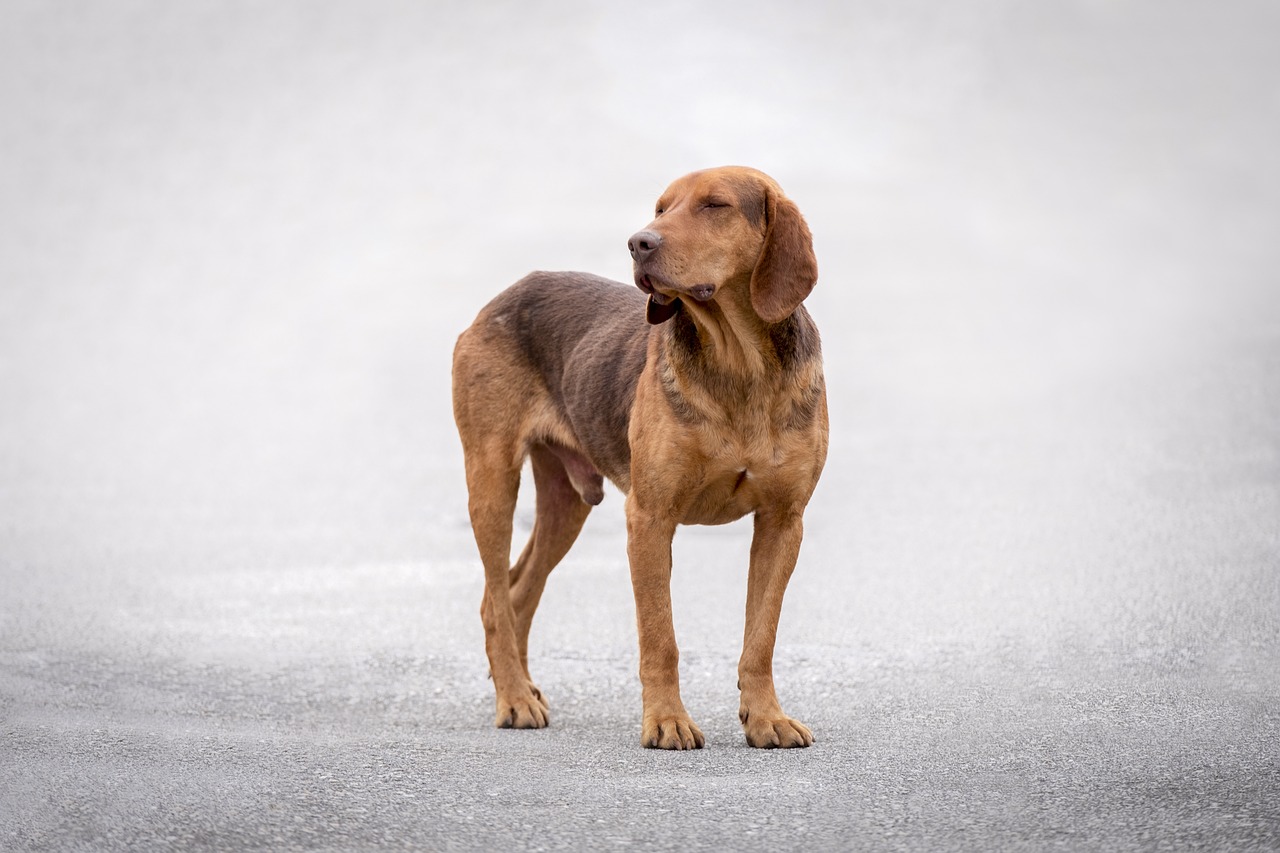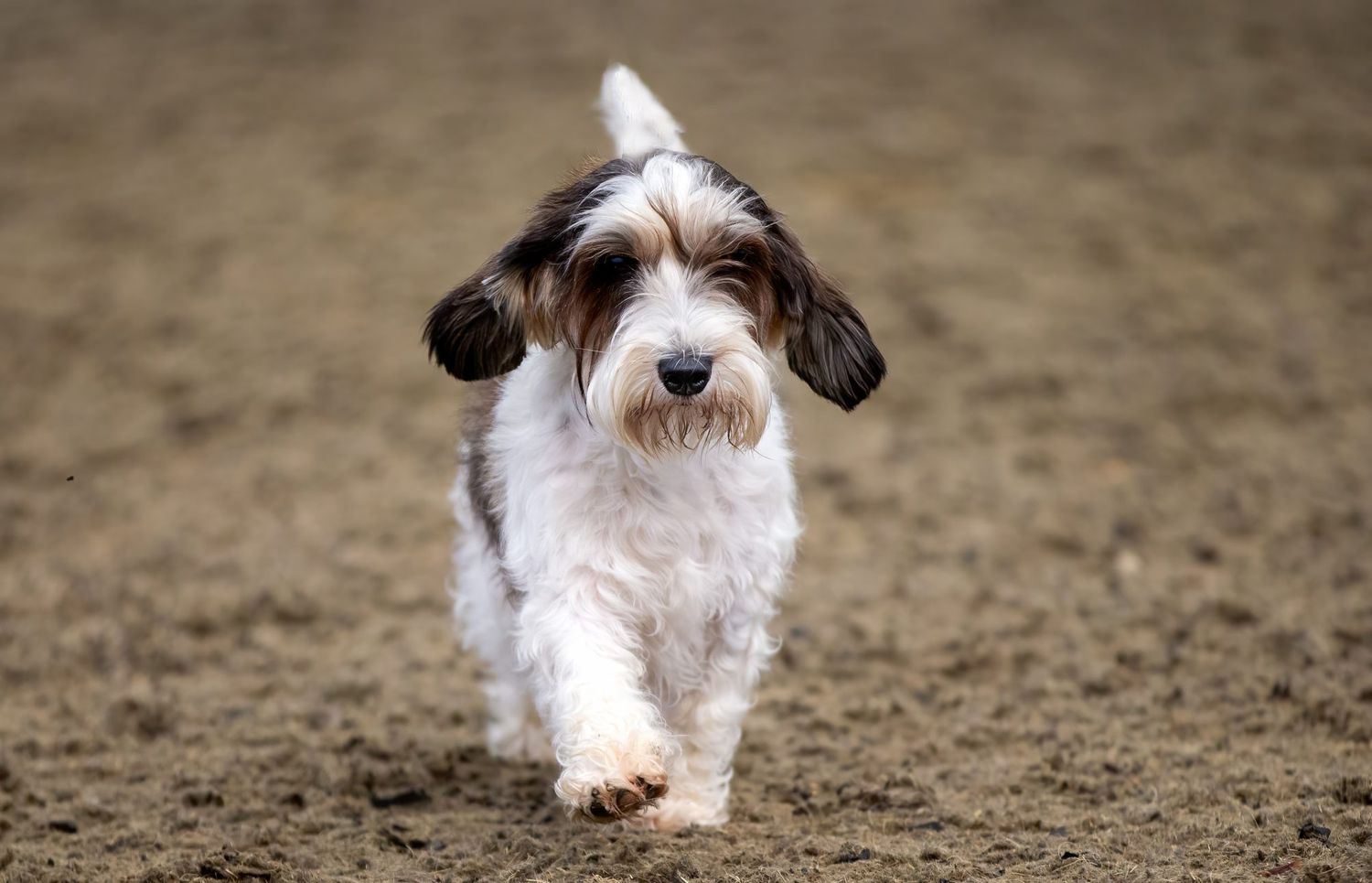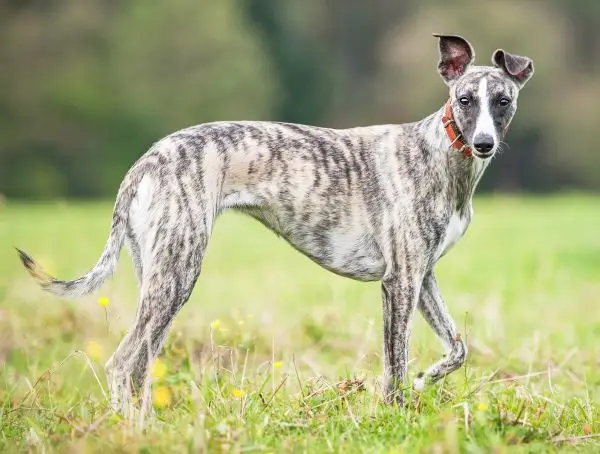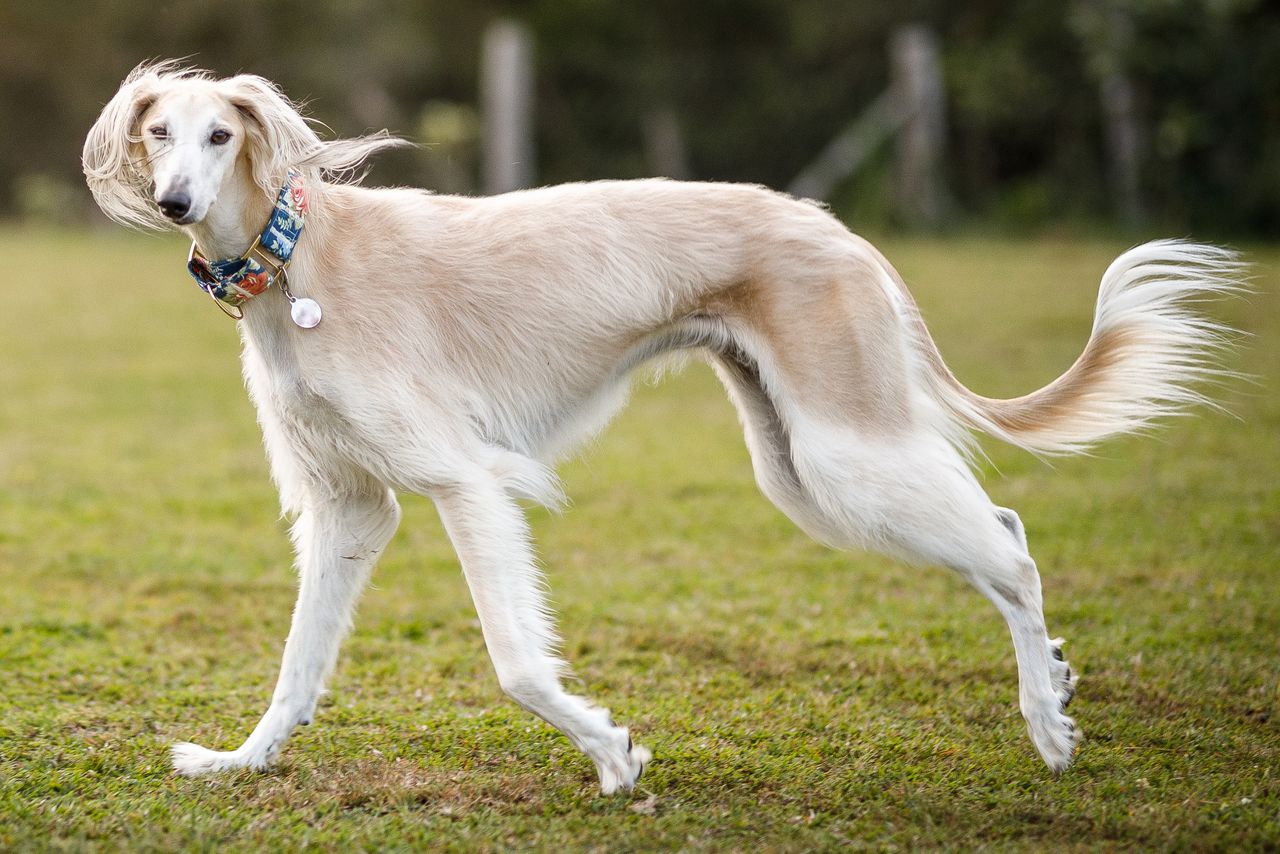My Unforgettable Introduction to the Afghan Hound
The first time I encountered an Afghan Hound in person, I genuinely stopped in my tracks. It was at a dog show in Chicago, and across the exhibition hall, I spotted what looked like a supermodel in canine form. With flowing silky hair that seemed to move in slow motion, an elegant elongated face, and a regal posture that screamed “I’m royalty and I know it,” this dog had presence unlike any breed I’d ever seen. As the handler guided this magnificent creature around the ring, the Afghan seemed to float rather than walk, its coat rippling like silk in a gentle breeze. I was completely mesmerized.
After the judging, I approached the owner, who noticed my obvious fascination. “They’re not just beautiful,” she told me with a knowing smile. “They’re ancient, independent, and unlike any other dog you’ll ever meet.” She then shared stories about life with her Afghans—tales of comedic stubbornness, surprising sensitivity, and loyalty that made me see there was so much more to these dogs than their stunning appearance. By the end of our conversation, I understood why Afghan enthusiasts speak of them with such reverence and why, despite their challenges, they inspire such devotion in their owners.
If you’ve only seen Afghan Hounds in dog show photos or perhaps as the glamorous face of luxury advertising campaigns, you’re missing the complete picture of this extraordinary ancient breed. Behind that spectacular flowing coat lies one of the oldest and most independent dog breeds in the world—a hunter, companion, and aristocrat with a personality as distinctive as its appearance.
Whether you’re considering adding one of these elegant hounds to your family, fascinated by their incredible history, or simply curious about distinctive dog breeds, I’ve put together the ultimate guide to Afghan Hounds. From their 8,000+ year history to what they’re actually like as companions (spoiler alert: they’re complex!), we’ll cover everything you need to know about these extraordinary dogs. So grab your favorite beverage, get comfortable, and let’s explore the wonderful world of Afghan Hounds!
Ancient Heritage: The 8,000-Year History of Afghan Hounds
To truly understand what makes Afghan Hounds so special, we need to appreciate their extraordinary history, which stretches back millennia and has shaped every aspect of these remarkable animals.
Origins in Ancient Afghanistan
The Afghan Hound is considered one of the oldest dog breeds in existence, with a history that may date back as far as 8,000 years. These ancient sighthounds originated in the mountains and deserts of Afghanistan, where they were developed by nomadic tribes for hunting large game like gazelles, antelopes, and even snow leopards in the rugged, challenging terrain of the region.
The breed’s isolation in the remote mountain valleys of Afghanistan led to its distinctive development, with different types emerging in different regions. These dogs were prized possessions of nobility and tribal chieftains, who used them not only for hunting but as symbols of wealth and status.
Archaeological evidence, including ancient carvings and paintings found throughout the Middle East, suggests that dogs remarkably similar to modern Afghan Hounds have existed for thousands of years. Their distinctly elegant silhouette is unmistakable even in ancient art, speaking to how true to type these dogs have remained over millennia.
Journey to the Western World
Afghan Hounds remained largely unknown to the Western world until the early 20th century. British officers stationed in the border regions of Afghanistan during the late 19th century were among the first Westerners to encounter these magnificent dogs and bring them back to England.
The breed’s introduction to Western dog fanciers is often credited to Major and Mrs. G. Bell-Murray, who brought several Afghan Hounds to Scotland around 1920. Shortly afterward, Zeppo Marx (of the Marx Brothers) and his wife brought some of the first Afghans to America.
The breed quickly captured attention in show rings for its spectacular beauty and exotic history. By the 1930s, Afghan Hounds had established themselves in the U.S. and European show circuits, and the Afghan Hound Club of America was founded in 1937.
The breed reached the height of its popularity in the 1970s, when the flowing, natural look of the Afghan Hound’s coat matched the aesthetic of the era. They became fashionable companions and were frequently featured in advertising and media, sometimes overshadowing their ancient heritage as skilled hunting dogs.
From Hunter to Companion
Throughout their long history, Afghan Hounds have transitioned from specialized hunting dogs to beloved companions and show dogs, yet they’ve maintained the independence, athleticism, and unique temperament shaped by their origins.
In their homeland, these hounds needed to think independently, make quick decisions while hunting, and navigate challenging terrain without constant direction from human handlers. They hunted by sight rather than scent, using their exceptional speed and agility to chase down game across rocky, mountainous landscapes.
This working heritage explains many hallmarks of the modern Afghan’s temperament – their independence, their reserved nature with strangers, and their incredible athleticism beneath all that glamorous coat. Though today’s Afghan Hounds rarely hunt, these ancient instincts remain embedded in their genetics and behavior.
The Afghan Look: Functional Beauty
The Afghan Hound’s striking appearance isn’t just for show – every aspect of their distinctive look developed for functional reasons related to their work as hunters in the varied landscapes of Afghanistan. This perfect blend of form and function creates a dog of extraordinary beauty and capability.
Size, Structure, and Movement
Afghan Hounds are large, elegant sighthounds with a distinctive silhouette that’s instantly recognizable. Males typically stand 27-29 inches at the shoulder and weigh between 60-75 pounds, while females are slightly smaller at 25-27 inches and 50-60 pounds.
Their overall structure combines speed, agility, and endurance – necessary traits for hunting in challenging mountain terrain. Key physical characteristics include:
- A long, refined head with a slightly prominent occiput (the bump at the back of the skull)
- Almond-shaped eyes with a dark, exotic expression
- Small ears covered with long hair
- A long, arched neck flowing into level shoulders
- A deep chest and tucked-up abdomen
- A level topline with prominent hipbones
- Strong, lean hindquarters built for powerful propulsion
- Large feet covered with abundant hair, providing the “snowshoe” effect needed for desert and mountain terrains
- A tail with a curl or ring at the end
Perhaps most captivating is the Afghan’s movement – a smooth, floating gait with tremendous reach and drive that conserves energy while covering ground efficiently. When running at full speed, Afghans exhibit a double-suspension gallop (where all four feet leave the ground twice in each stride cycle) similar to that of a cheetah, allowing them to reach speeds of up to 40 miles per hour.
The Magnificent Coat
The Afghan Hound’s most famous feature is undoubtedly its spectacular coat. Long, silky, and flowing, it’s one of the most distinctive coats in the canine world. But this beautiful coat isn’t just for show – it served important purposes in the breed’s homeland.
In the mountainous regions of Afghanistan, where temperatures can swing dramatically from blazing days to freezing nights, the Afghan’s thick coat provided insulation against both extremes. The long hair protected the dogs from rocky terrain and harsh weather, while the relatively short-haired “saddle” area on the back allowed for efficient cooling during the chase.
Afghan Hounds come in all colors and patterns, including:
- Cream or light gold
- Red or golden
- Brindle (tiger-striped pattern)
- Black
- Blue (a diluted black appearing as slate gray)
- Silver
- Domino (a specific pattern with a lighter face and ears)
- Various combinations and patterns
The coat’s texture is fine and silky, giving it that characteristic flow and movement that makes the breed so eye-catching. Afghan puppies start life with fuzzy, shorter coats, and the full adult coat typically doesn’t develop until the dog is around 18 months old.
While stunningly beautiful, the Afghan’s coat requires significant maintenance. Without regular grooming, it will quickly mat and tangle. Most Afghan owners develop a regular bathing and brushing routine, dedicating several hours each week to maintaining their dog’s coat. This grooming commitment is one of the most important considerations for potential owners.
Personality & Temperament: Beyond the Beautiful Exterior
Perhaps no aspect of Afghan Hounds is more misunderstood than their personality. Often described as “aloof” or “cat-like,” there’s much more complexity to the Afghan temperament than these simple characterizations suggest.
The Independent Spirit
The most defining characteristic of Afghan temperament is their independence. These dogs were bred to hunt over vast, challenging terrain, making split-second decisions without constant guidance from their human handlers. This created a dog that thinks for itself rather than looking to humans for constant direction.
This independence doesn’t mean Afghans don’t form strong bonds with their people – they absolutely do. However, they express this attachment differently than more demonstrative breeds. An Afghan’s devotion often manifests as a quiet presence, choosing to be in the same room as their people rather than demanding constant interaction or attention.
Afghan Hounds have often been described as “dignified clowns” – capable of both regal elegance and surprising silliness. Many owners report that their Afghans have a well-developed sense of humor and enjoy playful antics, but on their own terms and schedule. This playful side is often reserved for family members and rarely displayed to strangers or casual acquaintances.
Sensitivity and Reserve
Another key aspect of Afghan temperament is their remarkable sensitivity. These dogs are finely attuned to their environments and particularly to the emotions of their human family members. Harsh words or conflict can deeply affect an Afghan, and they typically respond poorly to forceful training methods or any form of roughness.
This sensitivity extends to their interactions with strangers. Most Afghans are naturally reserved with people they don’t know – not fearful or aggressive, but simply cautious and dignified. They typically won’t rush to greet visitors with exuberance but will instead assess the situation before deciding whether to approach. Proper socialization from puppyhood helps Afghans become comfortable in various situations while maintaining their naturally dignified demeanor.
With family members, especially those who understand and respect their nature, Afghans often show greater affection and attachment than they do to others. This private devotion, revealed only to those they trust completely, is one of the special joys of living with the breed.
Intelligence on Their Terms
Afghan Hounds are intelligent dogs, but their intelligence manifests differently than in breeds specifically developed for trainability and working closely with humans. Their intelligence is geared toward independent problem-solving and decision-making – exactly what was needed for a hunting dog working in challenging terrain.
This independent intelligence often leads to mischaracterizations of Afghans as “unintelligent” in dog training literature. They understand commands perfectly well but may choose whether or not to comply based on their own assessment of the situation. This selective listening isn’t stubbornness for its own sake but rather the product of thousands of years of selection for independent thinking.
The key to working with Afghan intelligence is finding motivation that matters to them and making training sessions engaging rather than repetitive. Many Afghans excel in activities that allow them to use their natural abilities, like lure coursing or agility, where their intelligence and physical capabilities can shine.
Living With an Afghan: Practical Considerations
Beyond their history and personality, what’s it actually like to share your home with an Afghan Hound? There are some unique considerations that potential owners should understand before bringing one of these special dogs home.
Grooming Realities
Perhaps the most significant practical consideration for potential Afghan owners is the grooming commitment. That glamorous coat requires substantial maintenance to keep it beautiful and healthy.
A typical grooming routine for an Afghan Hound includes:
- Thorough brushing 2-3 times weekly (more during coat-blowing seasons)
- Regular bathing (typically every 1-2 weeks)
- Careful drying after baths to prevent matting (many owners use high-velocity dryers)
- Special attention to areas prone to tangling, like behind the ears and in “armpits”
- Regular ear cleaning
- Nail trimming and foot hair maintenance
Many Afghan owners develop a systematic approach to grooming, tackling small sections at a time to make the process manageable. Some choose to keep their pets in a shorter “puppy clip” to reduce maintenance while still preserving the breed’s elegant appearance.
Beyond the time commitment, potential owners should consider the financial aspect of Afghan grooming. Professional grooming for an Afghan can be expensive, and even home grooming requires an investment in quality tools like slicker brushes, combs, and a good dryer.
Exercise and Space Needs
Despite their elegant appearance, Afghan Hounds are athletic dogs that need regular exercise to stay physically and mentally healthy. Their exercise pattern typically follows their hunting heritage – short bursts of intense activity followed by periods of rest and relaxation.
Most Afghans need 30-60 minutes of exercise daily, ideally including opportunities to run in a safely enclosed area. Their strong prey drive means they should never be trusted off-leash in unsecured areas, regardless of how well-trained they seem.
Contrary to what some might expect, many Afghans adapt well to apartment living provided their exercise needs are met. Inside the home, they’re often quiet and inactive, preferring to lounge on comfortable furniture or beds. Their natural cleanliness and minimal barking can make them good neighbors in multi-unit dwellings.
That said, access to safe running areas is important for Afghans to express their natural athleticism. Options include:
- A large, securely fenced private yard (fences should be at least 6 feet high with no gaps)
- Enclosed dog parks during quiet hours
- Organized lure coursing or racing events for sighthounds
- Long-line exercise in open, safe areas
Training Approaches
Training an Afghan Hound requires understanding their unique mindset and using approaches that work with, rather than against, their natural tendencies. Effective Afghan training typically involves:
- Positive reinforcement using rewards the individual dog values
- Consistency and clear communication about expectations
- Short, engaging sessions that prevent boredom
- Patience and acceptance of their independent nature
- Early socialization to build confidence and appropriate responses
- Recognition that certain instinctive behaviors (like chasing) are deeply ingrained
Many Afghan owners find that their dogs respond well to clicker training, which provides clear communication about desired behaviors. Some Afghans also enjoy the mental stimulation of trick training, though they may prefer to learn at their own pace rather than through repetitive drilling.
House training is typically straightforward with Afghans due to their natural cleanliness, though the independent nature of the breed means that consistent routines and positive reinforcement are important during the learning process.
Health Considerations
Afghan Hounds are generally healthy dogs with a typical lifespan of 12-14 years. As a breed that developed naturally with minimal human interference for much of their history, they’ve avoided many of the genetic health problems that plague some modern breeds.
However, there are some health considerations specific to Afghans:
- Sensitivity to anesthesia: Like other sighthounds, Afghans metabolize certain drugs differently due to their low body fat percentage. Always ensure your veterinarian has experience with sighthounds or is willing to research appropriate protocols.
- Hip dysplasia: While less common than in some breeds, hip issues can occur in Afghans.
- Thyroid problems: Hypothyroidism appears with some frequency in the breed.
- Eye conditions: Various eye issues, including cataracts and progressive retinal atrophy, occasionally occur.
- Allergies and skin sensitivities: Some Afghans develop allergies that can affect their skin and coat.
Responsible breeders screen for genetic health issues and work to produce sound, healthy puppies. When considering an Afghan puppy, asking about health testing and the longevity of related dogs provides insight into what to expect.
Afghans and Other Pets: Managing the Hunter’s Instinct
One important consideration for potential Afghan owners is how these dogs interact with other animals. Their strong prey drive significantly impacts their ability to peacefully coexist with smaller pets.
The Prey Drive Reality
Afghan Hounds were bred for thousands of years to spot, chase, and capture fleet-footed game. This deeply ingrained instinct remains strong in modern Afghans, who can go from serene lounging to intense pursuit in seconds when they spot a small, moving animal.
It’s important to understand that prey drive is triggered primarily by movement rather than recognition of a specific animal. This means that even an Afghan who has lived peacefully with a cat for years might give chase if the cat suddenly darts across the room or yard. The fast movement triggers the instinctual response, often bypassing the dog’s recognition that this is a familiar housemate.
Afghans and Cats
The relationship between Afghans and cats varies widely by individual. Some Afghans live harmoniously with cats, particularly when:
- They’re raised with cats from puppyhood
- The cats are confident and not prone to running
- The individual Afghan has a relatively low prey drive
- Interactions are carefully managed, especially during early introductions
However, many Afghans maintain a strong chase instinct even toward cats they’ve lived with for years. This doesn’t necessarily mean they intend to harm the cat – the chase itself is what drives them – but the size difference creates obvious risk.
Households with both Afghans and cats typically need management strategies like separate spaces where cats can retreat beyond the dog’s reach, supervision during interactions, and careful training to interrupt chasing behavior before it escalates.
Afghans and Small Animals
With smaller pets like rabbits, guinea pigs, hamsters, and birds, the situation is generally more clear-cut. These animals closely resemble the natural prey that Afghans were bred to hunt, and their movements are particularly likely to trigger chase responses.
Most experienced Afghan owners recommend complete separation between Afghans and small prey animals. This typically means keeping small pets in secure rooms or enclosures and never leaving the dog unsupervised in their presence.
Afghans and Other Dogs
Most Afghan Hounds get along well with other dogs, especially when properly socialized from puppyhood. Their play style can be quite active and may include playful chasing and “tag” games that mimic hunting behavior, but this is typically done in a social, non-aggressive manner.
Many Afghan owners find that their dogs particularly enjoy the company of other sighthounds who share their play style and energy patterns. Having multiple Afghans or a mix of sighthound breeds often works well, as they understand each other’s communication and play signals.
When introducing an Afghan to other dogs, the same principles of good dog introductions apply: neutral territory, controlled circumstances, and awareness of each dog’s body language and comfort level.
Is an Afghan Hound Right for You? Honest Assessment
After learning all about these elegant, ancient dogs, you might be wondering if an Afghan Hound would fit well in your lifestyle. Let’s take an honest look at who should (and perhaps shouldn’t) consider this breed.
You Might Be a Great Afghan Hound Owner If…
An Afghan Hound might be right for you if:
- You appreciate independent dogs with unique personalities
- You’re committed to regular grooming or can budget for professional grooming
- You have a securely fenced yard or reliable access to safe running areas
- You’re willing to keep your dog on leash in unfenced areas regardless of training
- You have experience with dogs or are prepared for a learning curve
- You appreciate a dog that bonds deeply but isn’t constantly demanding attention
- You understand and respect their hunting heritage and natural instincts
- You’re patient with training and accept that perfect obedience may not be achievable
- You’re interested in activities like lure coursing that showcase their natural abilities
Afghan Hounds can adapt to various household types, including families with older, respectful children; adult-only homes; and single person households. They often thrive in quieter, more structured environments where their dignity and sensitivity are respected.
A Different Breed Might Be Better If…
An Afghan Hound might not be the best choice if:
- You don’t have time for or interest in extensive grooming
- You want a dog that’s easily trainable with high reliability off-leash
- You have small pets and aren’t willing or able to manage potential prey drive
- You have very young children who might play roughly or unpredictably
- You want a guard dog or protector (most Afghans are reserved but not protective)
- You prefer a dog that’s demonstratively affectionate with everyone it meets
- You’re looking for a dog that will reliably perform obedience commands in all situations
- You’re a first-time dog owner looking for an “easy” breed
Finding Your Afghan
If you decide an Afghan Hound is right for you, there are several paths to finding your perfect companion:
- Breed-specific rescue organizations: Groups like Afghan Hound Rescue and various regional sighthound rescues occasionally have Afghans in need of homes. These dogs often come with the advantage of being past the challenging puppy stage.
- Reputable breeders: Research is essential to find breeders who prioritize health and temperament, conduct appropriate health testing, and provide lifetime support to puppy buyers. The Afghan Hound Club of America maintains a breeder referral service.
- Show vs. pet quality: Many breeders have puppies that are considered “pet quality” rather than show prospects. These dogs make wonderful companions, often at a lower price point than show potential puppies.
Be prepared for a potential wait, especially if you’re seeking a puppy from a reputable breeder. The best breeders often have waiting lists and breed only when they have homes lined up for all puppies.
Conclusion: The Timeless Allure of the Afghan Hound
There’s something almost mystical about Afghan Hounds. Perhaps it’s their ancient lineage, connecting us to the earliest days of the human-canine partnership. Perhaps it’s their otherworldly beauty, seemingly too elegant to be of this world. Or perhaps it’s their unique temperament—independent yet loving, dignified yet playful—that creates a relationship unlike any other in the dog world.
Living with an Afghan means embracing certain compromises—the time spent grooming, the necessity of secure fencing, the acceptance that perfect obedience may remain elusive. But for those who appreciate their special qualities, these accommodations are minor compared to the joy of sharing life with such an extraordinary companion.
Afghan Hounds aren’t for everyone, and that’s perfectly okay. Their unique combination of beauty, independence, and sensitivity requires understanding and accommodation. But for those who connect with their special spirit, Afghans offer a glimpse into the ancient past of our relationship with dogs while providing a loyal, distinctive presence in our modern lives.
If you decide to welcome one of these elegant sighthounds into your heart and home, prepare for a relationship unlike any other—filled with moments of breathtaking beauty, occasional humorous stubbornness, and the quiet companionship of a dog whose ancestors hunted alongside humans in the mountains of Afghanistan thousands of years before our modern civilization began. As the saying goes among Afghan enthusiasts, “They’re not just dogs—they’re Afghans,” and for the right person, that makes all the difference in the world.




